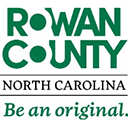Get Moving With Your Children
go.ncsu.edu/readext?813879
en Español / em Português
El inglés es el idioma de control de esta página. En la medida en que haya algún conflicto entre la traducción al inglés y la traducción, el inglés prevalece.
Al hacer clic en el enlace de traducción se activa un servicio de traducción gratuito para convertir la página al español. Al igual que con cualquier traducción por Internet, la conversión no es sensible al contexto y puede que no traduzca el texto en su significado original. NC State Extension no garantiza la exactitud del texto traducido. Por favor, tenga en cuenta que algunas aplicaciones y/o servicios pueden no funcionar como se espera cuando se traducen.
Português
Inglês é o idioma de controle desta página. Na medida que haja algum conflito entre o texto original em Inglês e a tradução, o Inglês prevalece.
Ao clicar no link de tradução, um serviço gratuito de tradução será ativado para converter a página para o Português. Como em qualquer tradução pela internet, a conversão não é sensivel ao contexto e pode não ocorrer a tradução para o significado orginal. O serviço de Extensão da Carolina do Norte (NC State Extension) não garante a exatidão do texto traduzido. Por favor, observe que algumas funções ou serviços podem não funcionar como esperado após a tradução.
English
English is the controlling language of this page. To the extent there is any conflict between the English text and the translation, English controls.
Clicking on the translation link activates a free translation service to convert the page to Spanish. As with any Internet translation, the conversion is not context-sensitive and may not translate the text to its original meaning. NC State Extension does not guarantee the accuracy of the translated text. Please note that some applications and/or services may not function as expected when translated.
Collapse ▲
As parents, we have all heard or even said the famous saying, “Do as I say, not as I do.” In reality, we know that modeling the behaviors we want is the key to getting those behaviors to show up in our kids. Words are important, too.
Leading by example through word and deed can be a tougher of the struggles of parenthood, especially when it comes to healthy lifestyle habits, like moving more after a tiring day.
And since August is National Family Fun Month and the perfect reminder to take a break and have some carefree playtime with the kids before they return to school schedules. There are endless opportunities for silly family moments!
Here are few tips to get you moving more –
Actively participate! Try to join in whatever activity your children are doing as hopping, crab-walking, stomping, slithering, and leaping through the living room, even if just for a short time. No matter if it is just a few minutes, every minute of being active counts. For older kids, that may mean playing catch, shooting hoops, walking, or jogging along with them as they train for a sport.
Cultivate a positive attitude about being active. Take time for yourself to move and make it fun! Remember that little ones learn through their senses. What they see and hear from their adult caregivers about physical activity, along with what they experience first-hand, becomes what they know and live. Older kids may be more likely to take on the attitude of their peers toward physical activity, but your influence is still of the utmost importance.
For young children, use words to describe what the parts of our bodies are doing to move: how we’re moving, where we’re moving, and with whom. Our descriptive language helps children to make connections between their bodies and brain. Kids also learn new words by interacting with us. Child development experts say children need repeated exposures to words in various contexts. Narrate the action, much like a sportscaster would describe the play-by-play of a sports event. It may feel silly at first, but try it! Here’s an example, if your child is pretending to ice skate in the living room: “Both of your feet are gliding across the floor so quickly!” (Part of body= feet, what part of the body is doing=gliding, how the body is moving=quickly, where the body is moving=across the floor).
For young children, use the magic of music and movement. Songs are a great way to help young children gain body awareness. For example, to help your child learn about how their body parts are “connected,” the songs and movements of “Head, Shoulders, Knees and Toes” and “Dem Bones” (i.e., “Your head bones connected to your neck bone…”) are an easy choice. Music and movement are magical for young children!
Involve the entire family in active games and household chores. Let your child(ren) see you moving and having fun. It will help them grow in every way!
Here are additional things that you could do as a family before school starts –
- Order pizza and watch a movie in the backyard
- Go camping
- Take a vacation
- Enjoy a backyard campfire
- Build a backyard or indoor fort
- Go on a family bike ride
- Take a day trip to a zoo or aquarium
- Go fishing together
- Go hiking or walking together
- Spend a day at the park
- Cook a meal together
- Have a family karaoke night
- Work on a puzzle together
- Play miniature golf
- Visit a local museum
For additional ideas:
10 Ways to Celebrate National Family Fun Month
Toi N. Degree, Associate Family & Consumer Education Agent with North Carolina Cooperative Extension in Rowan County. Toi may be reached by phone at 704-216-8970 or by email at toi_degree@ncsu.edu.




